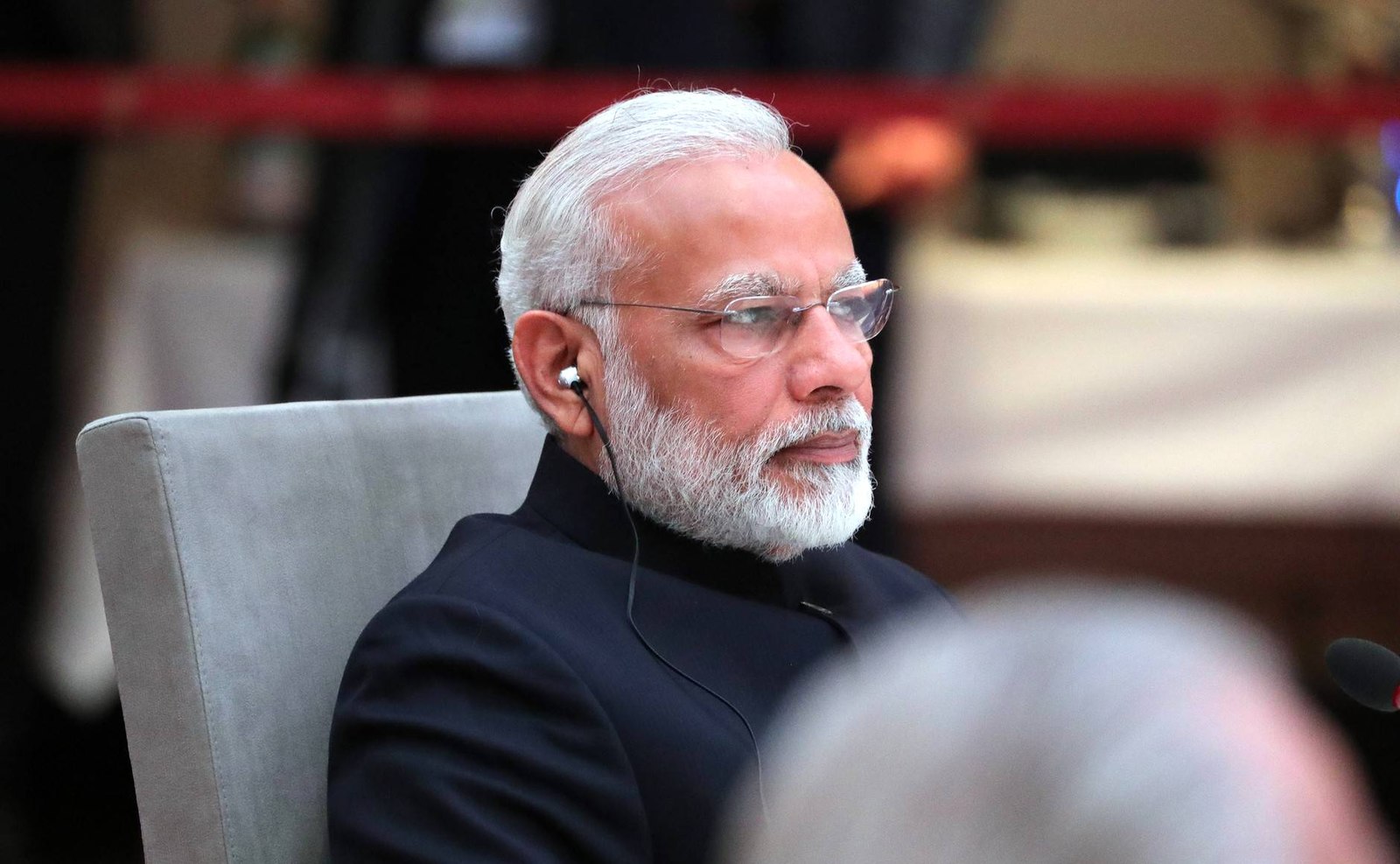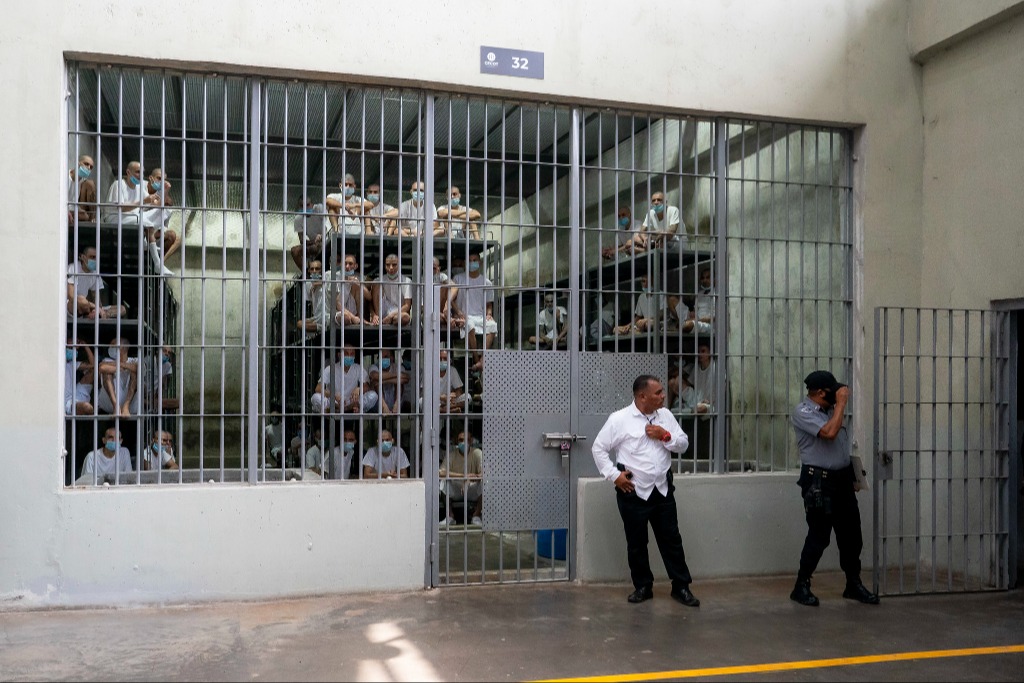Why Are Farmers Protesting in India?
The protests expose the limits of Prime Minister Narendra Modi’s strongman politics and the decline of Indian democratic institutions. They may be the largest challenge for Modi since he came into power in 2014.

Published by The Lawfare Institute
in Cooperation With

As military tanks and elaborate floats paraded through the center of New Delhi on Jan. 26 as part of India’s annual Republic Day celebrations—commemorating the day India’s democratic constitution came into effect—a rally just miles away turned violent. Farmers protesting agricultural reforms drove tractors through barricades and faced off with police. It was a dramatic escalation after months of mostly peaceful protests by hundreds of thousands of farmers. The protests have challenged Indian Prime Minister Narendra Modi and threatened the viability of the governing coalition leading the world’s largest democracy.
At the center of the protests are agriculture reforms prompted by Modi’s Bharatiya Janata Party (BJP), which pushed three farming laws through Parliament in September 2020. But thanks to the rushed process by which the laws were passed and the government’s crackdown on dissent, what might have been a debate over agricultural economics has instead become a political challenge to the ruling party. The government’s response to the protests has raised questions about speech rights, internet freedoms and the stifling of opposition in a country of more than 1.3 billion people. It’s maybe the largest challenge for Modi since he came into power in 2014—one that exposes the limits of his strongman politics and the decline of Indian democratic institutions. Given India’s role as a key player in the geopolitical system and a strategic counterweight to China, protests that affect the stability of the Indian government and the future of Indian democracy could have wide-reaching consequences.
Modi’s government passed the three farming laws in September to dramatically change the decades-old system of selling agricultural goods in India in an effort to resolve India’s long-standing agricultural crisis: Nearly half of India’s workforce is employed in agriculture, but farming makes up only around 15 percent of the country’s gross domestic product—a portion that is declining steadily. More than half of farming households are in debt, which has contributed to a crisis of suicide among farmers.
The current agriculture system dates back to the decades after India’s independence. In the 1960s, with food shortages plaguing the country, the Indian government intervened in what is known as the “Green Revolution” by introducing new technologies to increase the production of rice and wheat. At that time, the government also created a new food marketing system. The system is complicated and varies across states, but, essentially, it involves farmers bringing crops to wholesale markets known as mandis and selling the crops to traders in an open auction. The mandis are run by a marketing board established by the state to prevent farmers from being exploited by large retailers. Prices can be informed by minimum support prices (MSPs)—prices set by the government and at which it buys crops in certain states.
The three new laws each deregulate a different aspect of the agricultural system: the sale, pricing and storage of goods. They allow farmers to sell their goods to private buyers outside the state-run markets and create a system for contract farming. Taken together, the laws reduce the government’s role in agriculture and open up spaces for private investors.
The government argues that the deregulations increase efficiency, allow farmers greater freedom and let farmers negotiate better prices for their crops. But farmers say these reforms will devastate their earnings. Many worry that by allowing farmers to bypass the state-sanctioned marketplaces and sell directly to private buyers without paying the taxes or fees required by state-run markets, the laws will gradually make the mandi system obsolete. Protesting farmers’ biggest fear is that this dismantling of the mandis will end the MSPs—a safety net that assures farmers that they will be paid a certain price without regard to market conditions. Without MSPs, farmers would be at the mercy of private companies that have no obligation to pay them the guaranteed minimum price. The bills say nothing about the MSPs, and Modi has promised that they will remain. Still, protesters are skeptical and have demanded that the government make its promise in writing.
While experts largely agree that India’s agricultural sector needs reform, many criticized the way in which Modi’s government passed the laws—the bills were rushed through Parliament without significant debate and were passed in a dubious voice vote, and farmers say they were not consulted in the process. “The Indian Parliament is quickly moving from being the custodian of the dignity of legislation to being a site for the acclamation of authoritarianism,” wrote Pratap Bhanu Mehta, a political science professor at Ashoka University in Haryana, of the BJP’s bulldozing of the legislation through Parliament. The BJP’s “parliamentary strategy is not simply to win. It is to show that it can pretty much do anything with impunity,” he said.
Farmers’ unions began holding local protests soon after the BJP rushed the bills through Parliament in September. Two months later, on Nov. 26, farmers from the northern states of Punjab and Haryana began marching to the capital to pressure the government to repeal the laws, and across India, an estimated 250 million others joined a strike in solidarity—likely the largest organized strike in human history. The marchers were met with police in riot gear who used water cannons and tear gas to try to keep the farmers from nearing New Delhi. But the farmers made it through, and more than 200,000 set up camp at entry points to the city. Farmers say they’re prepared to remain outside Delhi until the laws are repealed. They’ve parked tractors and other vehicles along highways into Delhi and have set up sprawling tent cities with community kitchens, medical camps and other facilities.
Most of the protesting farmers are from Punjab and Haryana—India’s biggest agricultural producers and the two states that benefited the most from Green Revolution reforms. Many are Sikhs, as the religious minority in India makes up a majority in Punjab. The farmers protesting outside New Delhi are among the wealthier farmers in the country, a group that benefits from disproportionate government buying at the MSP. In states where there are no large-scale MSP operations, private market prices tend to be lower. This system, therefore, incentivizes the wealthier farmers to lobby to maintain the status quo.
In January, on India’s Republic Day, the largely peaceful protests turned violent when some farmers deviated from protest routes previously determined by the police. They dismantled barricades and drove toward the center of the capital city where they clashed with police and stormed the historic Red Fort. At least one protester died, and hundreds of police officers and protesters were injured. Farmers’ groups condemned the violence, calling it the product of “anti-social elements” that “infiltrated the otherwise peaceful movement,” but they refused to call off the protests.
In the following days and weeks, the police blocked roads with concrete slabs, dug trenches and even planted nails in concrete to keep protesters from entering New Delhi. The government has arrested more than 100 people and charged leaders of farmers’ unions with rioting and sedition. It cut electricity and water intermittently at one farmer camp, supposedly to maintain order. The government also shut down the internet in areas around Delhi’s borders—in some places for days—“in the interest of maintaining public safety and averting public emergency,” according to India’s Home Ministry. “The government does not want the real facts to reach protesting farmers, nor their peaceful conduct to reach the world,” Darshan Pal, a leader of a coalition of farmers’ unions, told CNN. “It wants to spread its false spin around farmers. It is also fearful of the coordinated work of the farmers’ unions across different protest sites and is trying to cut off communication means between them.”
The government has filed sedition and other charges against at least nine journalists who reported on the protests and specifically about the death of a 25-year-old farmer, Navreet Singh, who witnesses say was shot by police during clashes on Republic Day but officials claim died in a tractor accident. The government claims the journalists provoked violence on Jan. 26 by falsely reporting that police shot Singh. On Feb. 14, Delhi police announced that it arrested a 22-year-old activist for creating and sharing a “toolkit” that outlined how supporters could help protesters, which police say aims to “create misinformation and disaffection against the lawfully elected government.”
Crackdowns on speech extend to social media sites as well. On Jan. 31, the Indian government ordered Twitter to block users in India from viewing more than 250 Twitter accounts the government said were spreading misinformation and could incite violence. Twitter initially complied with the order, blocking accounts of people who had criticized Modi and the account of The Caravan, a narrative journalism magazine—a move that sparked public outcry. But then, just hours later, the company unblocked the accounts. In response, the Indian government threatened legal action against Twitter officials in India for violating the order and asked Twitter to remove more than 1,000 additional accounts related to the farmer protests.
On Feb 4., Twitter permanently removed more than 500 accounts—including many of the originally suspended accounts—and blocked an unspecified number from being viewed in India. The company explained it had taken the measures because under Indian law, Twitter executives in the country could be jailed for not removing content the government claims threatens national security. In a blog post published the same day, the company said it would not take action against accounts belonging to activists, politicians, journalists and news media organizations because it does not believe such demands from the government are “consistent with Indian laws.”
These modes of stifling dissent are not new for the Modi government, which has exercised similarly aggressive tactics in responding to demonstrations against controversial policies and otherwise quelling opposition. At the beginning of February, India slipped two spots to 53rd in The Economist Intelligence Unit’s Democracy Index, a global ranking measuring the state of democracy around the world—continuing a downward trend since 2014, when it ranked 27th of the world’s freest countries. When it comes to online expression specifically, India tops the world in the number of internet shutdowns imposed by the government. In recent years, authorities have used internet shutdowns to control information and suppress protests, including during protests in 2019 over a controversial citizenship law and India’s revocation of Kashmir’s special status. The government has also repeatedly attempted to repress journalists critical of Modi’s government, and a leading press freedom index ranks India 142 out of 180 countries. This democratic backsliding is of concern not only for Indians but also for countries like the United States, Australia and Japan, which look to India as a crucial, democratic state in the Indo-Pacific region.
The government has attempted to paint the protesting farmers as “anti-national,” a label given frequently to those who criticize Modi or the Hindutva politics of the ruling BJP. Modi’s government accused the protesters of being “infiltrated” by various groups. One minister claimed they were filled with “leftist and Maoist elements” while some senior BJP officials, attempting to discredit the many Sikh farmers in the protests, claimed the protesters were “Khalistanis”—a reference to the fringe Sikh separatist movement. These claims echo the nationalist language used by the Indian government against other protesters who have challenged Modi’s government—protesting Muslims have been called Islamists; leftist students have been branded Maoists. But this rhetoric is falling flat. Farmers have received widespread public support among Indians, and some BJP leaders have rejected the Khalistani line.
The BJP also stoked nationalist sentiment after international figures like singer Rihanna and environmental activist Greta Thunberg expressed concern on social media about the government’s heavy-handed response to the protests. The posts prompted an uproar in India. BJP leaders and some Indian celebrities dismissed the criticism as foreign propaganda aimed at dividing the country.
The farmers pose perhaps the most significant challenge to Modi since he took office in 2014. The highly coordinated movement is the largest and most sustained protest Modi has confronted, and the government faces mounting pressure to resolve the situation that has already dragged on for months. The farmers don’t seem ready to back down anytime soon—they’re already preparing to endure the oppressive Delhi summer. They put Modi in a tough spot: If he withdraws the laws, he hurts his reputation as a strongman who gets things done, but if he acts aggressively toward the farmers, he risks further alienating a significant portion of the electorate.
Farmers are a powerful voting bloc—making up around half of the Indian electorate—especially in states ruled by the BJP. Many of them previously supported Modi. This might explain the government’s willingness to negotiate with protest leaders. Despite multiple rounds of talks between farmer leaders and the government, the two sides remain in a deadlock. The government offered to suspend the changes for 18 months and make amendments to the laws, which farmers rejected.
On Jan. 12 the Indian Supreme Court temporarily suspended implementation of the laws and appointed a committee of experts to consult with government officials and farmers to find a solution—a decision criticized by some as an overreach by the court. But protest leaders say they want nothing short of a repeal of the laws.
Modi’s handling of the farm laws is reflective of his style of top-down decision-making, taking unilateral action without building consensus. And the fact that farmers took to the streets to express their concern reflects their being shut out of that process. It’s far from the first time Modi has disregarded the democratic decision-making process in taking bold action that proved unpopular. In 2016, he announced a plan—which he kept secret even from his cabinet until the day of his televised address to the country—to demonetize the rupee by eliminating certain bank notes in a 50-day window, throwing the country into turmoil. In 2020, he announced a sudden coronavirus lockdown that prompted a deadly mass migration within the country. Neither of these nor other dramatic actions that led to public outcry inflicted lasting damage on Modi—to the contrary, they bolstered his image as a strongman who takes decisive action. It’s still too early to tell whether the farmer protests will be any different.
Whatever happens with Modi’s agricultural reforms, the government’s attempts to stifle dissent by cracking down on free speech and the press signal a broader decay of Indian democratic institutions. How the government resolves the dispute with farmers may be an indicator of whether these authoritarian tactics will continue to work—or whether the farmer protests will be a breaking point for Modi and his governing coalition.





